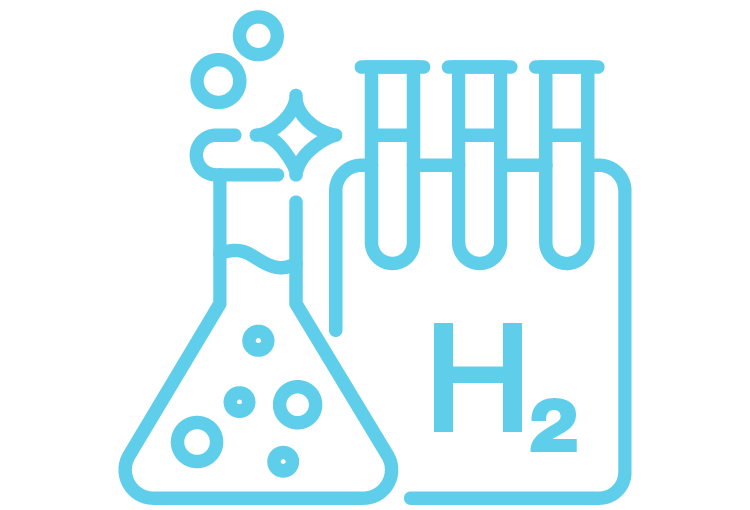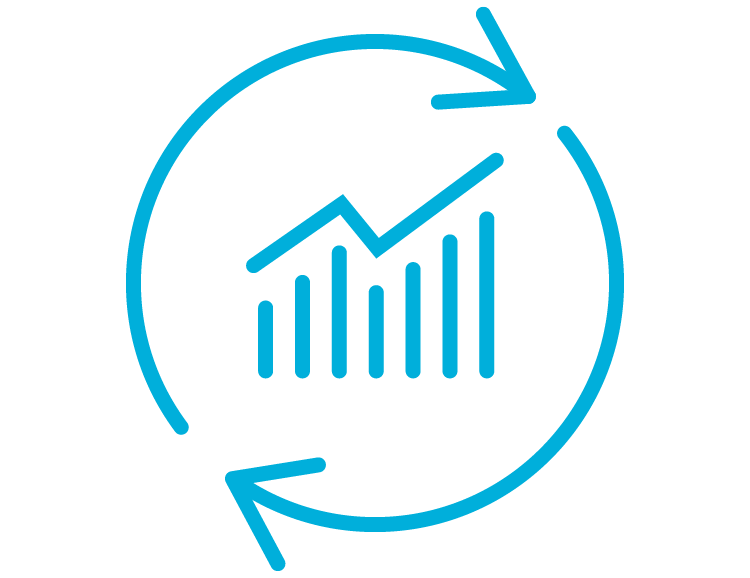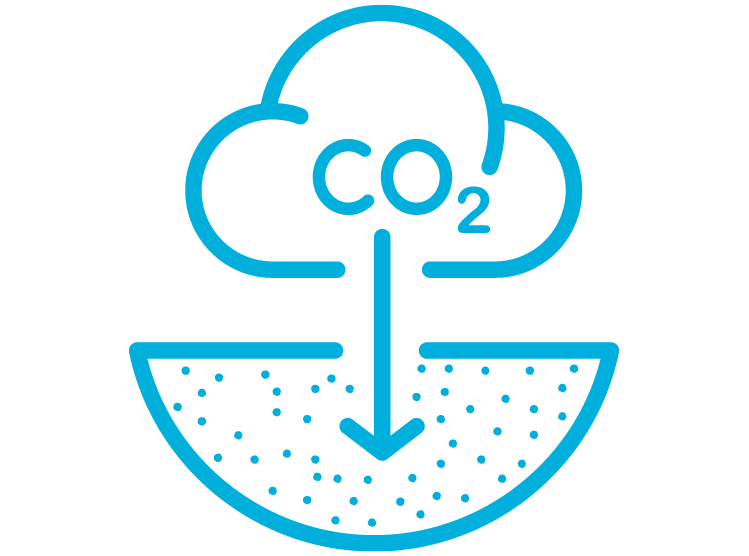Non-urgent government operations are closed December 24 to January 1, reopening January 2. View available services during this period.
Overview
Alberta is preparing for a lower emission future. The Hydrogen Roadmap is a key part of that future and is our path to building a provincial hydrogen economy and accessing global markets. It outlines the steps we are taking to support the sector as technology and markets develop.
Alberta is the largest hydrogen producer in Canada. We have all the resources, expertise, and technology needed to quickly become a global supplier of clean, low-cost hydrogen. With a worldwide market estimated to be worth more than $2.5 trillion a year by 2050, hydrogen can be the next great energy export that fuels jobs, investment and economic opportunity across our province.
Alberta's opportunity
Our natural gas reserves, when combined with carbon capture, utilization and storage (CCUS), provide a way to quickly scale hydrogen production. We also have the ability to produce hydrogen using renewable electricity or emerging technologies like natural gas decomposition.
Beyond producing clean hydrogen, Alberta has the opportunity to reduce carbon emissions by integrating clean hydrogen across our economy.
Hydrogen markets
There are 5 important markets for the growth of clean hydrogen in Alberta.
-
 Residential and commercial gas utility systems
Residential and commercial gas utility systemsHydrogen use in gas utilities includes appliances such as furnaces, boilers, water heaters, gas fireplaces, stoves, and laundry dryers.
Hydrogen can be blended with natural gas or burned directly to heat homes and businesses. Blending is an opportunity to decarbonize the natural gas distribution grid while slowly transitioning to higher blends of hydrogen.
-
 Transportation and mobility
Transportation and mobilityTransportation and mobility uses include hydrogen fuel cell cars, buses, trucks, trains and aviation, and hydrogen co-combustion engines primarily for heavy-duty applications.
Fuel cell electric vehicles (FCEVs) for passenger and freight transport are an emerging market that currently represent a small fraction of global vehicle fleets compared to internal combustion engine vehicles and battery electric vehicles. The FCEV potential is promising and the number of transportation applications is growing.
-
 Industrial processes
Industrial processesIndustrial uses for hydrogen include fuel refining and bitumen upgrading, ammonia and fertilizers, chemicals, and liquid synthetic fuels.
About 55% of Alberta’s current hydrogen production is used for heavy oil upgrading, 38% is used for the chemical sector and chemical industry by-products, and 7% for oil refining.
The greatest opportunity in the industrial sector is converting existing high carbon intensity sources of hydrogen into clean hydrogen sources.
-
 Power generation and energy storage
Power generation and energy storagePower generation and energy storage includes generating electricity using hydrogen turbines and fuel cell generators and producing hydrogen via electrolysis from intermittent renewables as an energy storage medium.
In the commercial power sector, hydrogen-fired gas turbines, combined-cycle gas turbines, and electricity using fuel cells do not currently have a large role, but could help reduce emissions in the future.
Another future use includes the renewable power generation market. Surplus renewable energy can be converted to hydrogen and stored, which could help with renewable energy variability and uncertainty.
-
 Export market
Export marketAlberta’s future energy competitiveness includes the export market that would meet growing international demand in North America, the Indo Pacific, and European markets.
Alberta has the energy resources to produce significant volumes of clean, cost competitive hydrogen and its carriers for global markets. Investors are showing significant interest in producing clean hydrogen in Alberta for export markets.
Policy pillars
The roadmap outlines how we will support the growth of clean hydrogen across target industries using these 7 policy pillars:
-
 Build new market demand
Build new market demandAlberta’s current hydrogen economy is a balanced system where production meets demand for existing industrial processes. Establishing new demand, other than hydrogen’s traditional use as an industrial feedstock, will be critical to move into new markets.
Policy actions need to support emerging hydrogen markets, initially focusing on markets that provide opportunities to immediately deploy hydrogen into the provincial economy.
-
 De-risk investment
De-risk investmentClean hydrogen is an emerging opportunity with challenging economics compared to conventional, higher-emission fuel sources. Long-term investment certainty and funding are needed to ensure investments can happen today to position Alberta for the long-term.
Alberta’s support to de-risk investment focuses on working with industry and other governments to enable new clean hydrogen production, improve access to capital, de-risk hydrogen use in transportation, and consider establishing a hydrogen trading hub.
-
 Ensure regulatory efficiency, codes and standards
Ensure regulatory efficiency, codes and standardsPublic safety will be prioritized by creating hydrogen codes and standards and regulatory requirements. A performance-based regulatory framework will allow hydrogen markets to move forward while reducing risk.
Aligning codes, standards, and regulatory harmonization with other jurisdictions is needed to ensure Alberta’s competitiveness across the hydrogen economy.
-
 Pursue hydrogen exports
Pursue hydrogen exportsAlberta could become a global supplier of clean hydrogen and its carriers such as ammonia. The challenge is overcoming operational constraints for export, such as a lack of a global supply chain, which includes infrastructure, transportation, liquefaction, and storage.
Alberta will need to have an established export supply chain in place to benefit from the international export opportunity.
Ammonia represents an immediate opportunity for Alberta to meet growing global demand for hydrogen, by leveraging rail infrastructure and port facilities.
-
 Enable carbon capture, utilization and storage (CCUS)
Enable carbon capture, utilization and storage (CCUS)For Alberta to make a clean hydrogen economy a reality, CCUS needs to be in place to facilitate cost-effective, large-scale production.
Initial CCUS infrastructure is currently in place, and the Government of Alberta continues to consider the competitiveness and CCUS accessibility to various industries across the province.
-
 Activate technology and innovation
Activate technology and innovationDemonstration projects, research, and innovation are needed to prove and scale-up emerging clean hydrogen technologies.
Training and development with Alberta’s world-class universities and technical schools are important for the labour force to support the clean hydrogen economy.
-
 Lead the way and build alliances
Lead the way and build alliancesPublic-private partnerships and government-to-government relationships, including with Indigenous governments, are essential to advance the hydrogen economy, send coordinated signals to investors, and build public awareness and understanding.
An emerging narrative against natural gas-based hydrogen production can disrupt Alberta’s efforts to build a clean hydrogen economy. As Canadian and global carbon intensity benchmarks and Guarantee of Origin schemes are proposed and developed, Alberta needs to actively inform their development with data grounded in robust analysis and science.
News
- Making Alberta a global leader in hydrogen (September 13, 2024)
- New funding for hydrogen innovation (August 1, 2023)
- Alberta on the path to a bright hydrogen future (November 5, 2021)